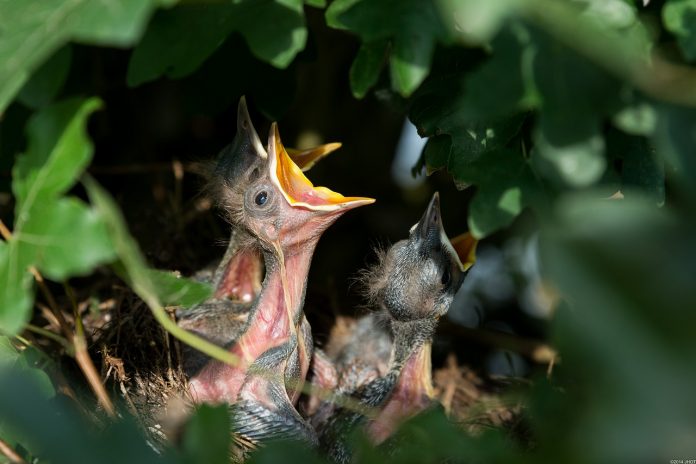After a week of unseasonably warm weather, the thermometer on my porch read 80 degrees on Feb. 24.
The daffodils were six inches high. The buds on the lilacs were swollen. And bluebirds, Carolina wrens, song sparrows, and chickadees sang their hearts out. Spring seemed four weeks early.
Songbirds
Regardless of February’s longer days and unusually warm temperatures, however, it is far too soon to expect any songbird nests for two reasons.
First, there is still absolutely no nesting cover. Trees and shrubs stand naked. Without leaves and the dense cover they provide, an early nest is just fast food for predators.
The contents of any nest built now would fall victim to blue jays, crows, squirrels, chipmunks, raccoons, and opossums. It would be a total waste of time, effort, and energy.
Second, the nesting season is timed to coincide with an explosion of food for nestlings.
Insects have not yet begun to reproduce in the numbers necessary to feed hungry young birds. Nestlings of most songbirds require the high protein diet that insects provide.
So regardless of weather, nature does not tolerate head starts on nesting.
Large birds
Of course, there are exceptions to every rule. Larger birds nest earlier than songbirds. Bald eagles and great horned owls are already incubating eggs here in the mid latitudes.
Great blue herons have returned to their rookeries where they are refurbishing large stick nests high in the sycamores.
Larger birds incubate their eggs longer, remain in the nest longer, and take longer to master the skills they need to live independently, so it typically takes an entire nesting season to raise a single brood.
Nest cams
If you’re anxious to find songbird nests in the backyard, you’ll need to wait at least another month. Or you can watch nest cams on your computer.
It was only a few years ago that remote cameras began to be used to monitor active nests. Image quality and connectivity were often poor, but nest cams allowed us to peek into the private lives of birds.
Today image resolution is often high definition, and what we see on our monitors is almost as good as being there.
One place to access nest cams is www.cams.allaboutbirds.com, courtesy of Cornell’s Lab of Ornithology.
There you can find a pair of red-tailed hawks building a nest in Ithaca, New York, active osprey and great horned owl nests in Georgia, and an albatross nest in Hawaii.
Another great place to find nest cams is www.viewbirds.com. Here you’ll find links to nest cams for ravens, peregrine falcons, barred owls, and barn owls, among many others (and some all around the world).
Click on “black vulture,” for example, to find a link to a nest in a shed in Newark, Delaware.
My favorite owl nest cam can be found at www.okcowlcam.com. A pair of great horned owls has been nesting on a planter outside a second story window for the last five years.
The male is a good hunter, and he brings fresh kills to the nest regularly.
Wood ducks
Finally, check out www.woodiecam1.com to spy on wood ducks and hooded mergansers nesting on Holt Lake near Smithfield, North Carolina.
These two cavity-nesting ducks sometimes share communal nests, and right now the merganser nest contains more than 20 eggs from three hens.
Nesting success at this site has been remarkable. Last year one wood duck hen hatched and fledged 21 of 25 eggs.
And in what must be some sort of record, last year one hooded merganser hen hatched 20 of 20 eggs, and all 20 ducklings fledged 34 days after hatching.
Without nest cams, getting this kind of information would be near impossible.
In addition to wood duck boxes, 85 smaller nest boxes at Holt Lake attract prothonotary warblers, the east’s only cavity-nesting warbler.
In 2015, those boxes fledged 200 young warblers, up from 127 in 2013. Unfortunately there is not yet a nest cam up for the warblers.
If you can’t wait for the nesting season to begin, do the next best thing: fire up the computer, and watch from afar.













